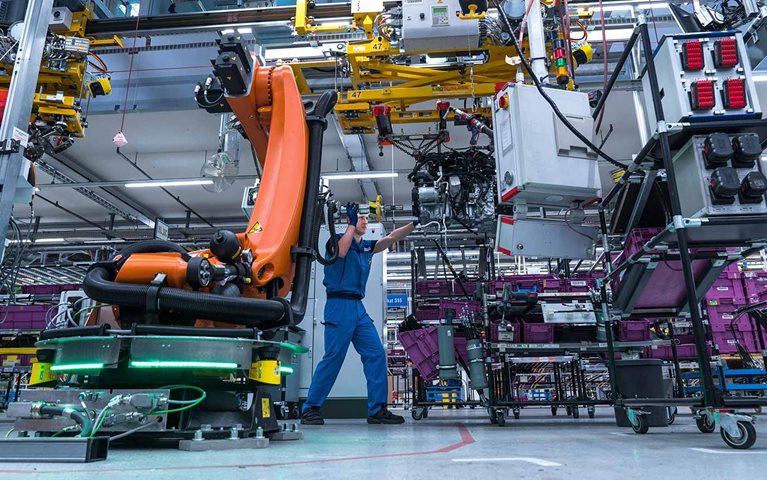Manufacturing innovations coupled with extraordinary demand are revolutionizing the industry and offering new opportunities to players in the sector. On October 15, our chief people officer and Operations practice leader Katy George joined the Washington Post’s Jonathan Capehart for a discussion on the promise of new manufacturing technology, the potential for industry transformation, and the central role that people will play in success. Earlier in the segment, Mr. Capehart was joined by US Labor Secretary Martin J. Walsh.
You can watch the entire event at Washington Post Live or read on for edited highlights from Katy’s remarks.
On America’s manufacturing opportunity
The future of America depends on sustainable and inclusive growth, and, as Secretary Walsh said, technology is key to that. And that is about shifting from 20th century manufacturing to 21st century manufacturing. We have this really exciting window [to make this shift] because supply shortages and the lack of resilience in our supply chain has been incredibly painful and damaging. But the flip side is that it has accelerated many companies’ journeys to digitize and use automation and advanced analytics in modernizing their manufacturing and their supply chains.
On the fear of automation
The companies that have been on the forefront of the technology frontier have actually created more jobs. There are some types of jobs that will diminish in size, but as companies are successful in driving productivity and growth, they actually create more jobs, different types of jobs.
One of the pieces of work that I think is most interesting in this space is the work that we’ve done with the World Economic Forum, where we have identified what is now about 90 different manufacturing sites or supply chains around the world that are at the forefront of adopting Industry 4.0, or Fourth Industrial Revolution technologies, including automation.
What’s so exciting is that all of these examples, all of them, have been really marked with a worker centricity. They are all about actually supporting the frontline workforce, upskilling them, and making their jobs easier.
On manufacturing’s “people shortage”
It is absolutely the biggest issue that the sector faces. When we talk to the CEOs of our [client] companies, people are their number one issue. That’s across the board but particularly in manufacturing where, frankly, some of the shortages that we’re seeing now started pre-pandemic and they’ve just gotten worse.
One of the things that the manufacturing sector is trying to do is to convince American workers that manufacturing is an exciting, high-tech industry with long-term career potential. And that’s a real change in mindset from the manufacturing of yore.

Building a more competitive US manufacturing sector
On successful manufacturing-tech transformation
Many companies are trying to introduce new technologies into their existing sites, and they’re doing so one technology at a time as opposed to really thinking through what is the business impact they’re trying to have. The problem is that that one technology alone doesn’t transform the way work is done or operational performance.
The companies that we’re seeing that are most successful take a specific area, and they typically introduce 30 or 50 different technology use-cases all at the same time. It’s augmented reality paired with digital performance management; paired with using the data from that performance management system to do advanced analytics to improve yield; paired with a digital solution to connect to the demand signal and really understand the total supply chain.
When you put all of those things together, which sounds daunting but can be done in a pretty pragmatic way, you get real transformation in performance, and the companies who have been successful truly are resetting benchmarks.
What I think is exciting is they are resetting benchmarks on productivity and the output that they can achieve. At the same time, they are resetting benchmarks on flexibility and also on carbon emissions, energy usage, and sustainability. We are no longer seeing this tradeoff between cost and flexibility, cost and sustainability. You can have both.
On inspiring manufacturing’s next-generation of workers
There is kind of an old-fashioned paradigm of manufacturing being very repetitive and difficult work. And although automation will disrupt some roles, it will also create new roles that actually are much more high-tech than the roles of the past, and frankly, not as repetitive.
We can automate the repetitive stuff, we can automate the dirty stuff and the dangerous stuff. And if you do that, the workforce of today in manufacturing really is operating in a high-tech environment. It’s actually a very exciting profession.

